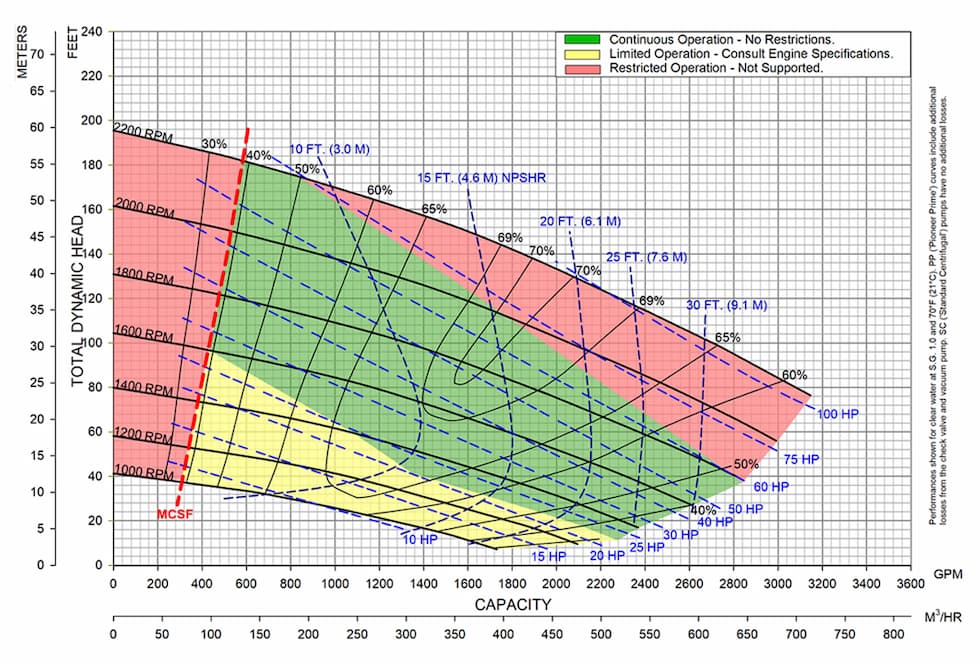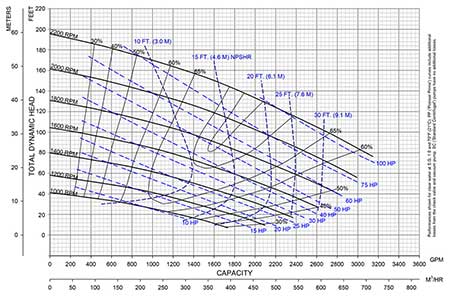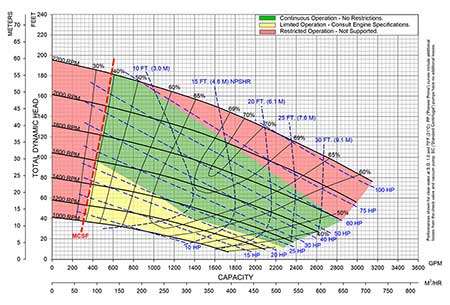
There is no denying that the United States Environmental Protection Agency (EPA) Final Tier IV-compliant engines are more complex than their predecessors. If a Tier IV engine gives an error code—and the pump stops running—there is no time for a learning curve. That is what makes selecting the right pump engine so important to operators and owners.
In the past, the most common practice was to err on oversizing a diesel engine for the pump. Pump curves provided insight into what this maximum capacity should be; yet with Tier IV engines, bigger is not always better. In fact, this type of thinking can not only hurt the engine in the long run, but also the initial investment that is probably being overspent, with expensive and time-consuming repairs coming down the road. Engines are designed to run around 1,800 revolutions per minute (rpm), and when they are not running at this speed long enough—say, they are idling for too long—it can cause problems and affect an engine’s life span. It can also hurt the pump. Engines work better when they run under high load. At lower speeds, the load put on the engine from the pump is reduced. Low load combined with low speeds is a bad combination for Final Tier IV engines.
Package curves look at a pump’s performance in a new way—creating a more specific recommendation for a pump and engine package. They show a targeted, ideal range needed to run a pump.

What Are Package Curves?
Pump curves have been around for decades and communicate a simple concept: pump performance. Package curves take this a step further—adding another dimension to the curves by specifically showing what size engine will run most efficiently with a pump, while still delivering optimum performance. These curves are meant to provide the right information in the simplest way possible and do not require a Final Tier IV expert to understand them. Package curves use color coded zones to illustrate boundaries of operation for the pump and engine.
Sizing Engines
The traditional way of sizing a diesel engine for a pump was to oversize it based on the performance curve. A user would look at the pump curve and size an engine that covers the power required at maximum speed. However, underusing a Final Tier IV engine can cause problems—operating an engine too low, for too long can create damage. Today’s Final Tier IV engines are more expensive and harder to repair than previous versions. Technicians are still learning about these engines. That means it is more important than ever to run the engine in a way that maximizes its life span and performance. For example, if an engine runs at low speed for an extended period of time, it can create problems with the engine, including shortened life, emergency service requirements, inefficient diesel exhaust fluid (DEF) or fuel consumption and other issues.
Pump life and longevity can also benefit from these new curves. Running at extreme speeds can cause excessive vibration, which is clearly marked on the package curve as a red or yellow zone of operation.

The recommended area of operation for the pump package is marked in green on the package curve (Image 2). Following these guidelines will ensure maximum life of the pump.
In terms of efficiency, the benefits go beyond operating and life span: package curves help users invest in the right-sized engine from the start. When following the package curves, users can get a correctly sized engine for the pump, which improves fuel efficiency and DEF consumption rates.
Lower Cost of Ownership
Package curves help owners and end users operate pump packages within a safe zone—ensuring longer life, reduced maintenance costs and lower cost of ownership. They can also help personnel in the field feel more confident with Final Tier IV engines by illustrating exactly where they can and cannot operate the pump. The changes brought on by EPA regulations for Final Tier IV have created new challenges, and by extension added time and cost into operations. These specialized package curves provide a clean and simple way to reduce uncertainty and improve performance and longevity of the product.

